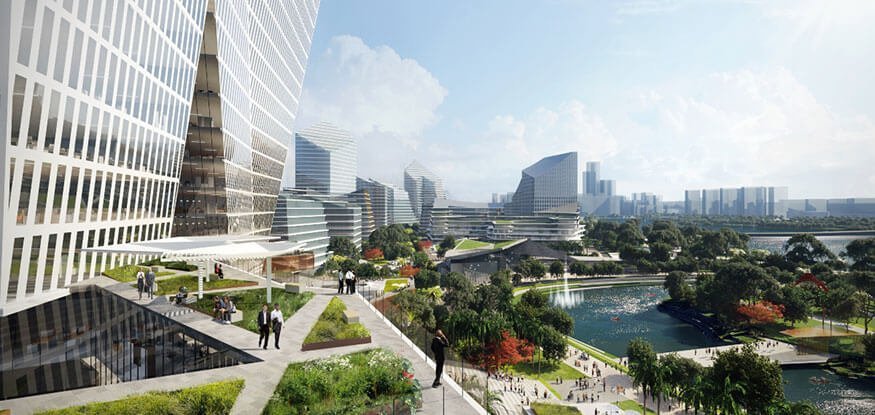Chinese internet company Tencent has announced that it is building a 2 million square meter smart city in Shenzhen.
In the country’s Guangdong province, the ‘Net City’ is being built in collaboration with the award-winning architect NBBJ in an effort to “re-envision the urban environment”.
Jonathan Ward, design partner at NBBJ, asked, “What happens when you bring one of the world’s largest tech companies and one of the world’s most innovative architecture firms together to re-envision the future of cities?”
To which he responded, “The answer is Net City, built entirely from the ground up to reflect the distributed network of the internet itself. Interconnected, integrated, organic and welcoming, Net City is designed to be a place where people can dream, come together as a community to connect and create new possibilities for the future.”
“A typical city calls for simplistic and efficient zoning to keep everything under strict control and facilitate the flow of goods, cars and people,” he added.
According the NBBJ, the master plan for the smart city will be based on blocks, buildings and open spaces made solely for humans to be able to go about their daily lives without the noise, pollution and speed that comes with motor vehicles.
“This principle was driven by a love for the industrial age machine. In today’s computer-driven world, we are free to imagine a highly integrated city that brings ‘work, live, play’ closer together to foster more synergy between people. This fits in perfectly with the collegial, collaborative culture of Tencent.”
In fact, a new Tencent building will be featured at the very center of the city as well as schools, retail spaces and other amenities which would add a layer of convenience to the lives of their employees.
As for the rest of the buildings in the city, they are expected to vary in scale, height and spacing. The design of the Net City is expected to have strong sightlines of nature, with greenery everywhere “from gardens, groves and parks at the ground level to grass-covered rooftops.”
Sustainability essentially underpins the city’s design. Its buildings will have photovoltaic panels on the rooftops and sensors which will track environmental performance and flooding.
Regarding the public transport network, a great emphasis will be placed on pedestrian access such as through the means of bicycles and other public transit options like subway stops, buses and corporate shuttles.
Indeed, the city’s design is in line with the country’s Sponge City Initiative which means that the collection of water will be done on campus, managing run-off and flooding, as well as mangrove trees on the shoreline’s edge.

